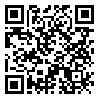Volume 7, Issue 4 (winter 2004)
jwss 2004, 7(4): 157-167 |
Back to browse issues page
Download citation:
BibTeX | RIS | EndNote | Medlars | ProCite | Reference Manager | RefWorks
Send citation to:



BibTeX | RIS | EndNote | Medlars | ProCite | Reference Manager | RefWorks
Send citation to:
J. Poureza, M. Mohammad Alipour. Effect of Whey in Drinking Water on Performance of Broiler Chickens. jwss 2004; 7 (4) :157-167
URL: http://jstnar.iut.ac.ir/article-1-492-en.html
URL: http://jstnar.iut.ac.ir/article-1-492-en.html
Abstract: (26288 Views)
This experiment was conducted to investigate the effect of whey via drinking water on broiler chicken performance. In a completely randomized design, whey at levels of zero, 10, 20, 40, 80, and 100% of drinking water was used for 47 days. 720 day-old broilers (Ross) were divided into 24 groups, 30 chicks per group and each experimental treatment was given to four replicates from 7-54 days of age. The whey was supplied freshly. The chicks had free access to feed and water during the experimental period. All chicks were fed with starter, grower, and finisher diets. Chicks in all pens were weighed and their feed consumption was calculated at 21, 42 and, 54 days of age. At the end of the experiment, two males and two females from each pen were selected, killed and their carcass, abdominal fat, pancreas, liver and ileum were weighed. Ileal contents of each pen were collected and pooled and kept at -20oC for bacterial count. The litter moisture content of each pen was determined at days 21 and 42. Body weight, daily body weight gain, feed conversion, and litter moisture were significantly (P<0.01) affected by whey levels. These indices decreased as a result of consuming whey by more than 40% feed conversion, however, increased. Percentage of carcass decreased significantly (P<0.01) due to consumption of 80 and 100% whey. Percentages of abdominal fat, liver, and pancrease were not significantly affected by the amount of whey. Percentage of ileum increased and showed significant (P<0.05) difference with control group. The regression equations for body weight and daily body weight gain, feed conversion and litter moisture in all ages, were significant (P<0.05) and polynomial. This indicated that consumption of whey by more than 40% caused reduction in broiler performance. No significant differences were observed in ileal contents of Lactobacillus and Entrobacteria due to different levels of whey, but total bacteria in ileum contents increased significantly (P<0.01) as whey content in drinking water increased.
| Rights and permissions | |
 |
This work is licensed under a Creative Commons Attribution-NonCommercial 4.0 International License. |





